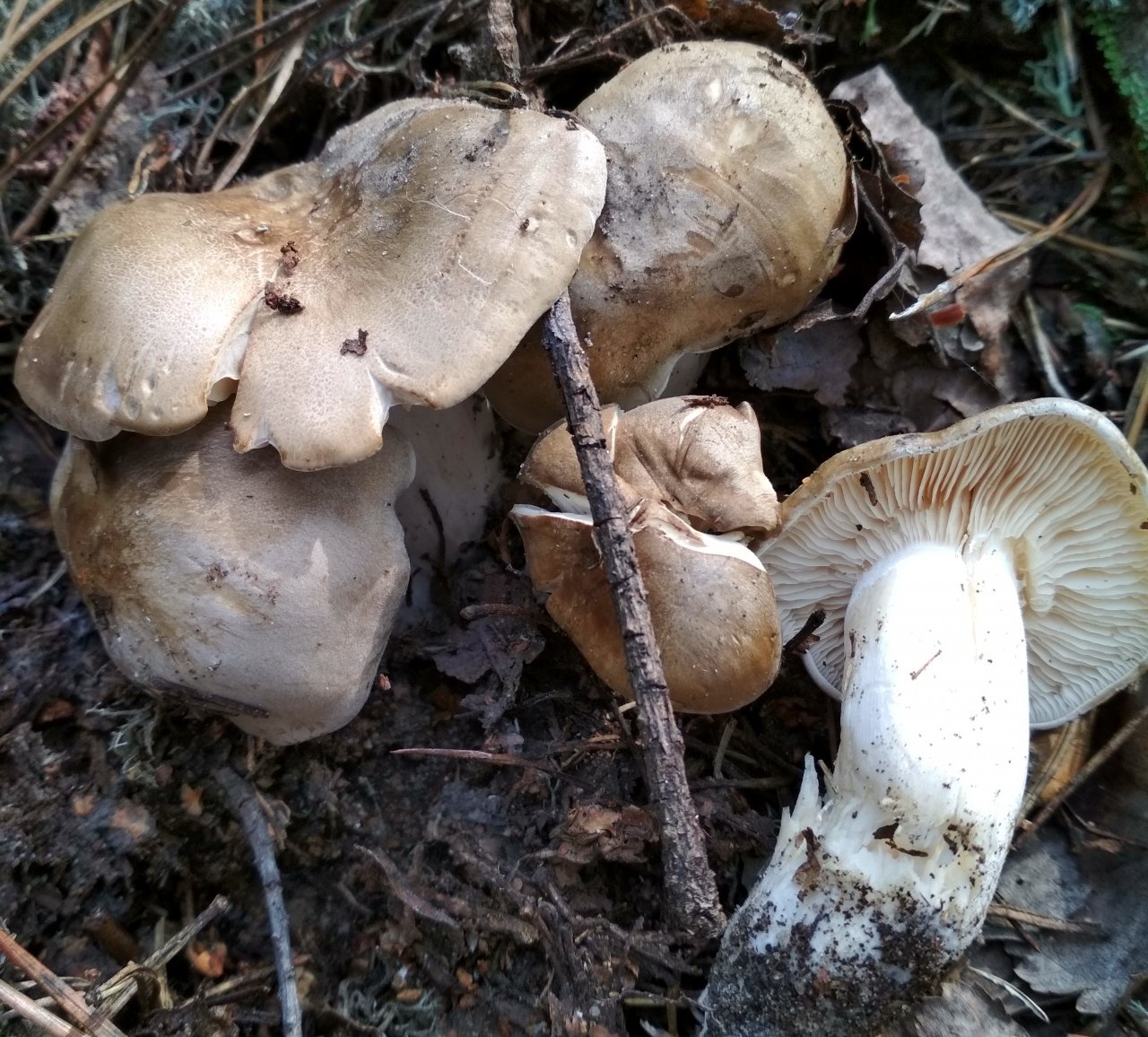Lyophyllum shimeji (Lyophyllum shimeji)
- Division: Basidiomycota (Basidiomycetes)
- Subdivision: Agaricomycotina (Agaricomycetes)
- Class: Agaricomycetes (Agaricomycetes)
- Subclass: Agaricomycetidae (Agaricomycetes)
- Order: Agaricales (Agaric or Lamellar)
- Family: Lyophyllaceae (Lyophyllic)
- Genus: Lyophyllum (Lyophyllum)
- Type: Lyophyllum shimeji (Liophyllum simedzi)
:
- Tricholoma shimeji
- Lyophyllum shimeji

Until recently, it was believed that Lyophyllum shimeji (Lyophyllum shimeji) is distributed only in a limited area covering the pine forests of Japan and parts of the Far East. At the same time, there was a separate species, Lyophyllum fumosum (L. smoky gray), associated with forests, especially conifers, some sources even described it as a mycorrhiza former with pine or spruce, outwardly very similar to L.decastes and L.shimeji. Recent molecular-level studies have shown that no such single species exists, and all finds classified as L.fumosum are either L.decastes specimens (more common) or L.shimeji (Lyophyllum shimeji) (less common, in pine forests). Thus, as of today (2018), the species L.fumosum has been abolished, and is considered a synonym for L.decastes, significantly expanding the latter’s habitats, almost to “anywhere”. Well, L.shimeji, as it turned out, grows not only in Japan and the Far East, but is widely distributed throughout the boreal zone from Scandinavia to Japan, and, in some places, is found in pine forests of the temperate climate zone. It differs from L. decastes only in larger fruiting bodies with thicker legs, growth in small aggregates or separately, attachment to dry pine forests, and, well, at the molecular level.
Hat: 4 – 7 centimeters. In youth, convex, with a pronounced folded edge. With age, it evens out, becomes slightly convex or almost prostrate, in the center of the cap there is almost always a pronounced wide low tubercle. The skin of the cap is slightly matte, smooth. The color scheme is in gray and brownish tones, from light grayish brown to dirty gray, may acquire yellowish gray shades. On the cap, dark hygrophan spots and radial stripes are often clearly visible, sometimes there may be a small hygrophobic pattern in the form of a “mesh”.
Plates: frequent, narrow. Loose or slightly grown. White in young specimens, later darkening to beige or greyish.
Leg: 3 – 5 centimeters in height and up to one and a half centimeters in diameter, cylindrical. White or grayish. The surface is smooth, may be silky or fibrous to the touch. In the growths formed by mushrooms, the legs are firmly attached to each other.
Ring, veil, Volvo: absent.
Pulp: dense, white, slightly grayish in the stem, elastic. Does not change color on a cut and a break.
Smell and taste: pleasant, slightly nutty taste.
Spore powder: white.
Spores: round to broadly ellipsoid. Smooth, colorless, hyaline or with fine-grained intracellular contents, slightly amyloid. With a large spread in size, 5.2 – 7.4 x 5.0 – 6.5 µm.
Grows on soil, litter, prefers dry pine forests.
Active fruiting occurs in August – September.
Lyophyllum shimeji grows in small clusters and groups, less often singly.
Distributed throughout Eurasia from the Japanese archipelago to Scandinavia.
The mushroom is edible. In Japan, Lyophyllum shimeji, called Hon-shimeji there, is considered a delicacy mushroom.
Lyophyllum crowded (Lyophyllum decastes) also grows in clusters, but these clusters consist of a much larger number of fruiting bodies. Prefers deciduous forests. The fruiting period is from July to October.
Elm lyophyllum (Elm oyster mushroom, Hypsizygus ulmarius) is also considered very similar in appearance due to the presence of hygrophan rounded spots on the cap. Oyster mushrooms have fruiting bodies with a more elongated stem and the color of the cap is generally lighter than that of Lyophyllum shimeji. However, these external differences are not so fundamental, if you pay attention to the environment. Oyster mushroom does not grow on soil, it grows exclusively on dead wood of deciduous trees: on stumps and the remains of wood immersed in the soil.
The species name Shimeji comes from the Japanese species name Hon-shimeji or Hon-shimejitake. But in fact, in Japan, under the name “Simeji”, you can find on sale not only Lyophyllum shimeji, but also, for example, another lyophyllum actively cultivated there, elm.
Photo: Vyacheslav









